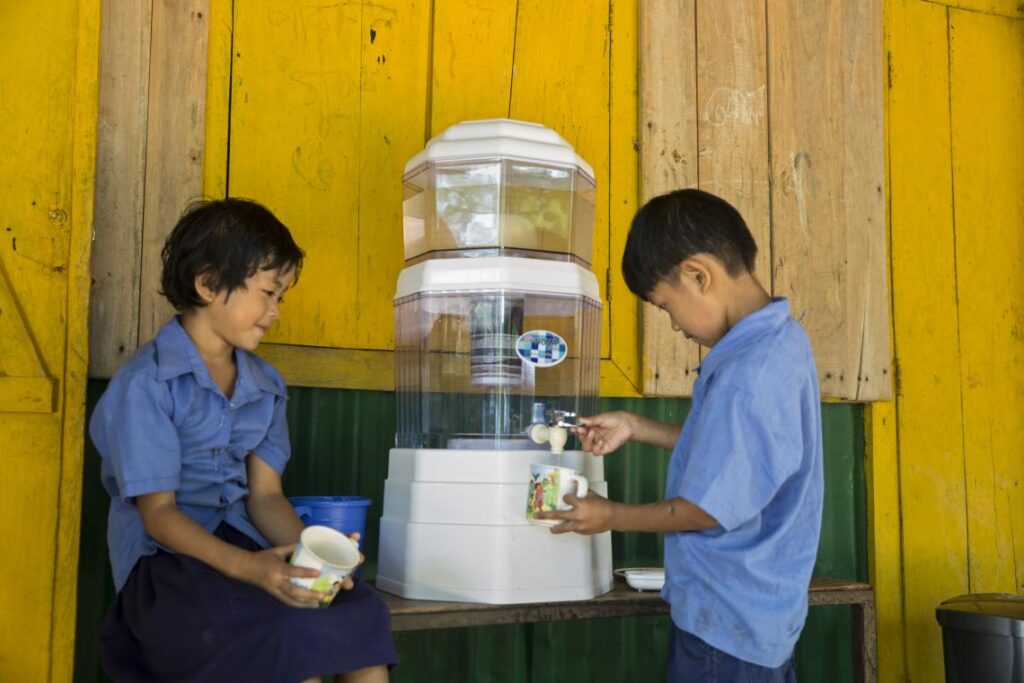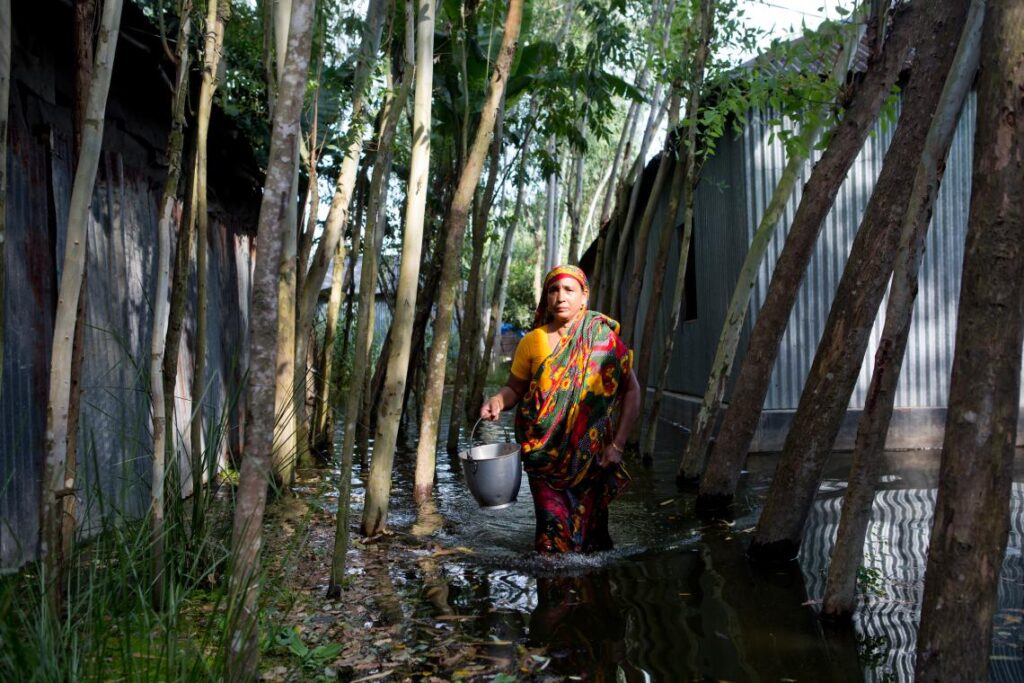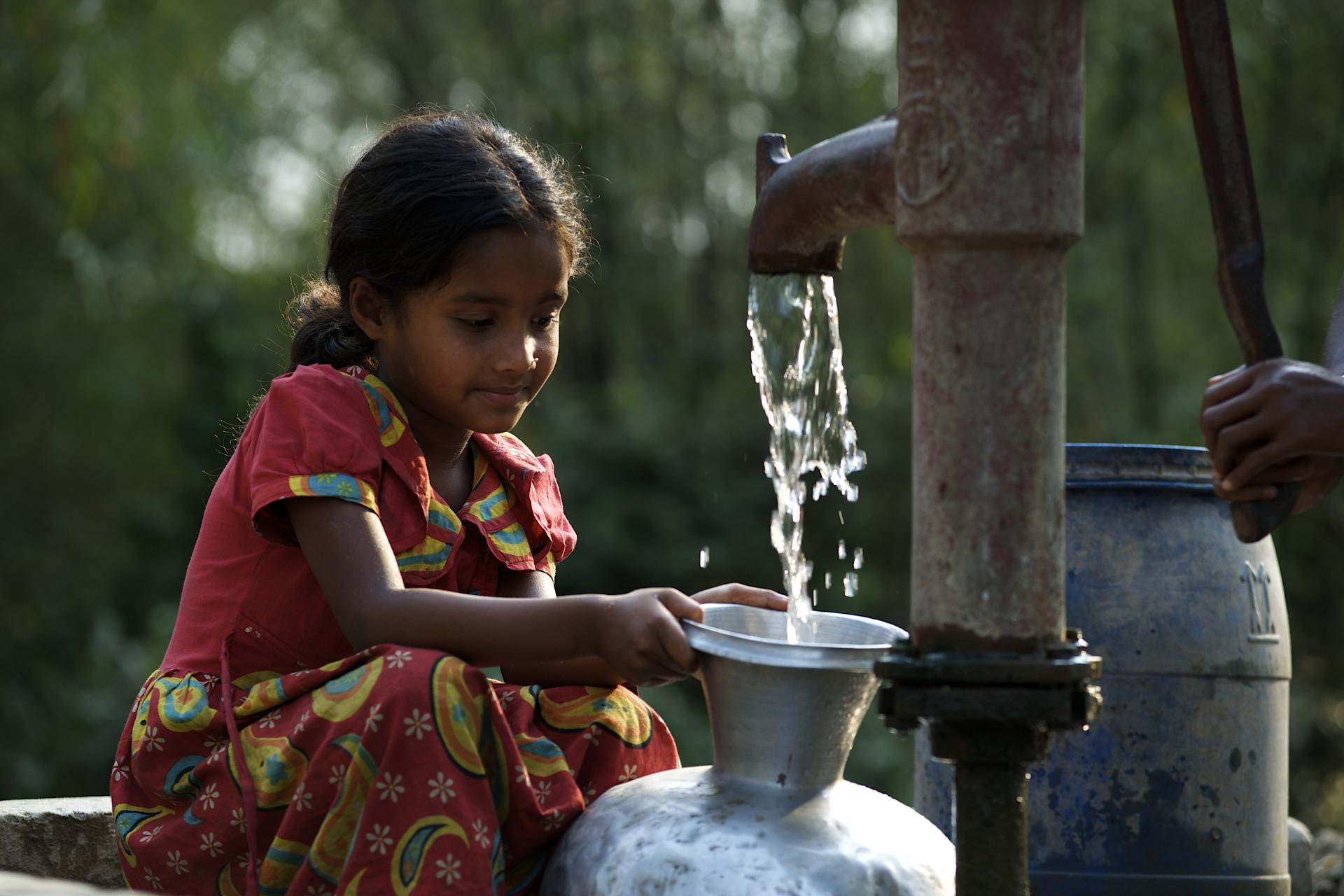Quality, equitable access and sustainability
Challenges
Bangladesh still has the largest proportion of people exposed to arsenic contamination
The right to safe water is recognised as a foundation of all other human rights.
Bangladesh has made significant progress regarding universal access to improved water sources, with more than 97 per cent of the population having access in 2013.
But access to safe drinking water is still low at 34.6 per cent.
Between 2000 and 2012, the proportion of the population drinking arsenic-affected water dropped from 26.6 per cent to 12.4 per cent. Yet Bangladesh is still the country with the largest proportion of people exposed to arsenic contamination in the world.
Despite progress, 19.4 million people are still drinking water with a level of arsenic above national health standards.
The presence of manganese, chloride and iron contamination also reduces the quality of drinking water. A third of the water points in Bangladesh has manganese levels above WHO guidelines.
Also, more than 41 per cent of people drink water from sources with faecal contamination. This rises to 61.7 per cent at the point of consumption. In this matter, urban dwellers with limited education are at the highest risk, according to the 2013 MICS survey.
Almost a third of the drinking water used by these urban households has high counts of E.coli bacteria that causes diarrhoea.
This manner of microbial contamination worsens as the water is transported from source to households, confirmed the MICS survey.
Two out of five households, that is 38.3 per cent of the population, in Bangladesh drink water from sources already contaminated with disease-causing bacteria and viruses. But due to poor hygiene practices at households, the number of people drinking water with microbial contamination jumps to 99 million.

পার্বত্য চট্টগ্রামের খারিক্ষয়ন সরকারী বিদ্যালয়ে ছাত্ররা পানি সংগ্রহ করছে।
The condition is worse in hilly terrains, urban slums, islands, coastal regions and wetlands, where there is still no reliable access to improved water sources
Poor water, sanitation and environmental hygiene situations in most of the health care facilities across the country provide an enabling environment for cross infection and negatively impact on the progress being made in neonatal and child mortality. In Bangladesh, sepsis accounted for about 20 per cent of neonatal deaths in 2015.
Drinking water sources are also contaminated during frequent disasters such as floods, landslides and cyclones. Latrines overflow and contaminate water sources during these extreme events.
Bangladesh is vulnerable to environmental disasters due to combined effects of climate change, population growth and urban migration.
Water quality in Bangladesh is affected by environmental pollution from industrial effluents, over-abstraction for irrigation and saltwater intrusion.
UNICEF also found evidence of significant disparity in water quality of different regions in Bangladesh. For example, 71.8 per cent in Rangpur division drink from E.coli-free water. But only 31.6 per cent in Sylhet Division can access the same.
In both access and quality, disparity exists between rich and poor households. The rich are more likely to have drinking water on their premises, while poor families are forced to dedicate more time collecting water from public or other outside sources.
There are also gender inequities in water services, found the 2013 UNICEF survey. For example, 89.6 per cent of women collect water for families, compared to 4.6 per cent of men who do the same.
Barriers to safe drinking water, alongside sanitation, have significant impact on health, nutrition, education, protection and other outcomes for children and adolescents.
Drinking water sources are also contaminated during frequent disasters such as floods, landslides and cyclones

The solution
UNICEF demonstrates integrated models by using the examples of arsenic-safe Unions and Upazilas
For equitable and sustainable access to clean drinking water, UNICEF interventions are targeted at three levels: water points, water services, and the water sector.
UNICEF works with government and partners to protect the rights of children, especially those who are most vulnerable. UNICEF also works to ensure safe water in emergencies, when children and adolescents are most vulnerable and at risk.
The cross-sectoral interventions of UNICEF are aligned with the Sustainable Development Goals. UNICEF supports scaling up safe water supply for communities and health, education and nutrition institutions in urban and rural areas.
For schools, UNICEF supports adequate WASH facilities in primary and secondary schools, thereby improving learner enrolment, attendance, completion and achievements. The interventions will also include Early Childhood Development Centres.
In health care, UNICEF focuses on facilities for newborns and mothers as access to clean water improves the quality of obstetric care and the survival rate of mothers and babies.
UNICEF works with the government to provide sustained safe water access to 24 million people by 2030
UNICEF works focus on women and girls and ensure safe management of menstrual hygiene. Adequate water supply at secondary schools has been shown to improve school completion rates, particularly of adolescent girls and even delays the age of marriage.
UNICEF supports safe water and sanitation for containing diarrhoeal diseases and intestinal inflammatory diseases contributing to high rates of undernutrition.
UNICEF partners with government agencies to deliver cost-effective services in hard-to-reach areas. For example, UNICEF’s partnership with Dhaka Water and Sewerage Authority has helped pioneer legal water connections for urban slum dwellers. UNICEF has worked together with Dhaka University to develop solutions to saline intrusion into groundwater in coastal areas through Managed Aquifer Recharge.
UNICEF advocacy will be key to the adoption and funding of the National Implementation Plan on Arsenic Mitigation in Water Supply.
UNICEF supports and scales up climate-resilient technologies through advocacy and builds the capacity of climate-resilient institutions. It promotes greater linkages between Integrated Water Resources Management and adaptation and mitigation of climate change.
UNICEF demonstrates integrated models by using the examples of arsenic-safe Unions and Upazilas to identify and address risks to water safety. UNICEF’s approach demonstrates how it is essential for sustainability and success that women participate in the design, operation and maintenance of community water systems.
UNICEF also enables communities with information, support and resources for utilisation of sustainable and resilient services.
UNICEF believes engaging and empowering communities and increasing their participation, especially that of women, children and adolescents, can increase sustainability of services for safe water, sanitation and hygiene.
UNICEF works to strengthen civil society organisations, both to facilitate engagement with communities and engender a sense of ownership, as well as to influence societal change, and will work as an advocacy partner to inform policy change.
Source: https://www.unicef.org/bangladesh/en/better-access-safe-drinking-water

